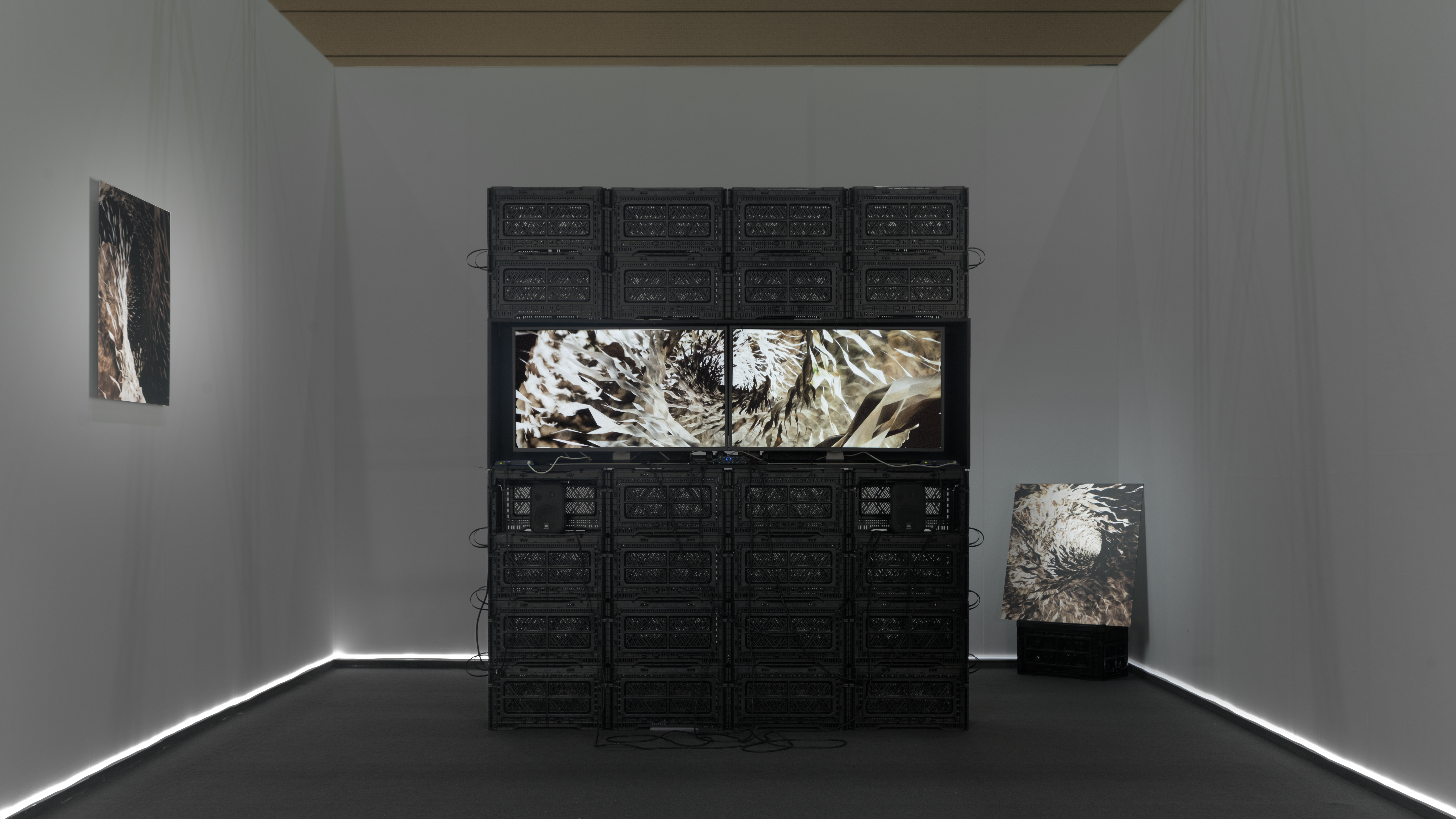



Black collapsible crates, two-channel video, (colour and sound), 11min
Render_TurbineTropics_01,
Render_TurbineTropics_02, 2023
Direct UV print on silver dibond, 800mm x 800mm
Frieze Seoul, Focus Asia
Seoul, South Korea
Presented by Yeo Workshop Singapore
Render_TurbineTropics_01,
Render_TurbineTropics_02, 2023
Direct UV print on silver dibond, 800mm x 800mm
Frieze Seoul, Focus Asia
Seoul, South Korea
Presented by Yeo Workshop Singapore
Turbine Tropics is an ongoing series that examines the economical, socio-political and ecological impacts of extractive capitalism, particularly through the lens of plantation economies in Southeast Asia. It positions the rubber plantation as a liminal space, neither fully natural nor entirely artificial, but continuously reshaped through human intervention and ecological forces.
Drawing from the physical act of rubber tapping, Turbine Tropics transforms this gesture into an abstract, infinite spiral. This spiral, reminiscent of the distinct patterns left by rubber tapping and the design of industrial drill bits, symbolise the dynamics of environmental degradation and regeneration, foregrounding the profound effects of resource extraction on local ecosystems. The installation incorporates collapsible storage crates as a framing device, reinforcing themes of mobility, transition, and liminality. Rooted in the logistics of colonial trade, these crates serve as a conduit for comparing historical modes of plantation extraction with contemporary forms of digital data mining. In both systems, complex entities such as land, labour, information are abstracted into measurable units, revealing the persistent logics of commodification that sustain extractive economies across time and territory.
Graphic Design: Studio Darius Ou
Image Credits: Jonathan Tan
Drawing from the physical act of rubber tapping, Turbine Tropics transforms this gesture into an abstract, infinite spiral. This spiral, reminiscent of the distinct patterns left by rubber tapping and the design of industrial drill bits, symbolise the dynamics of environmental degradation and regeneration, foregrounding the profound effects of resource extraction on local ecosystems. The installation incorporates collapsible storage crates as a framing device, reinforcing themes of mobility, transition, and liminality. Rooted in the logistics of colonial trade, these crates serve as a conduit for comparing historical modes of plantation extraction with contemporary forms of digital data mining. In both systems, complex entities such as land, labour, information are abstracted into measurable units, revealing the persistent logics of commodification that sustain extractive economies across time and territory.
Graphic Design: Studio Darius Ou
Image Credits: Jonathan Tan
